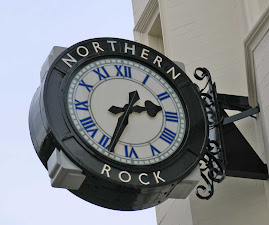The Public Accounts Committee publishes a report examining the
protection of the taxpayer ahead of nationalisation, the Treasury's
capacity and readiness and the oversight of Northern Rock after
nationalisation.
* Report: The Nationalisation of Northern Rock
Edward Leigh MP, Chairman of the Committee of Public Accounts, today said:
"The Treasury's lack of preparedness for dealing with the failure of a
major bank was evident as early as 2004 but nothing much was done to
remedy this weakness. It is not surprising therefore that, in September
2007, when there was the run on deposits at Northern Rock, the Treasury
was caught flat-footed.
"The taxpayer was therefore exposed to enormous risks and liabilities to
an unknown degree. Even though the Treasury was pouring in billions to
stabilize the bank, Northern Rock was allowed to carry on awarding high
risk loans to the tune of £750 million. And, when the Treasury
nationalised the bank in February 2008, it did not carry out its own due
diligence on the quality of the Rock's loan book; nor did it sufficiently
challenge the company's unrealistic forecast that house prices would
remain much the same up to 2012.
"That said, the Treasury's ultimate decision to nationalise Northern Rock
in February 2008 was based on a comprehensive assessment of the options
available to it. This analysis suggested that public ownership
represented the best alternative in terms of value for money.
"The Treasury must never again be so ill-prepared. As this crisis has
shown, the Treasury's ability to respond effectively to future financial
crises must be maintained at the highest level. This involves making
sure that, in future scenario testing, action is swiftly taken to deal
with any shortcomings that emerge."
Mr Leigh was speaking as the Committee published its 31st report of this
Session which, on the basis of evidence from the Treasury, examined the
protection of the taxpayer ahead of nationalisation, the Treasury's
capacity and readiness and the oversight of Northern Rock after
nationalisation.
The run on deposits at Northern Rock in September 2007 and the company's
subsequent search for a solution, culminating in public ownership in
February 2008, was the first major test in recent times of the Treasury's
capacity to deal with a bank in difficulty. By 2007 Northern Rock had
grown to become the fifth largest mortgage lender in the UK. To finance
its growth the company depended on raising funds from wholesale sources
such as other banks, and selling its existing mortgage book to investors.
In August 2007, credit concerns stemming from bad debts in the US mortgage
market caused banks to curb their lending to each other and investors to
stop buying mortgage-backed securities. Northern Rock began to experience
problems raising funds and asked the Bank of England for emergency
financial support.
When Northern Rock's customers became aware of the support, queues formed
outside branches and, over a few days, £4.6 billion was withdrawn. The
Treasury stabilised the situation by providing a series of guarantees to
retail depositors and wholesale lenders. This action avoided the immediate
risk of problems spreading to other banks. At its peak, the taxpayer
underwrote up to £51 billion of the company's liabilities. Throughout the
period of emergency support the company agreed, amongst other measures, to
reduce mortgage lending, but continued to write loans of up to 125 per
cent of a property's value.
With the assistance in place, the Treasury's preferred option was to
support the company while it searched for a private sector buyer. The
Treasury considered it should avoid taking any actions that were properly
a matter for the Northern Rock directors and, therefore, regarded the
company as being in charge of the search for a buyer, even though
increasingly large sums of public money were at risk. It gradually became
clear that potential buyers for the company could not arrange private
funding and, with market conditions continuing to deteriorate, there was
no prospect of a sale on this basis. The Treasury decided that
nationalising the company offered the best means of protecting the
taxpayer.
The Treasury was stretched to deal with a crisis of this nature. The
Treasury, the Bank of England and Financial Services Authority (the
Tripartite Authorities) had undertaken an exercise in 2004 to test their
response if a bank got into difficulty and had identified gaps in the
statutory framework to protect depositors. Prior to 2007, the Treasury did
not judge the work to address these gaps to be a priority.
Very few people within the Treasury had the relevant skills to deal with
the crisis at Northern Rock and it made extensive use of external
advisers. Although Goldman Sachs commenced work as the Treasury's
financial adviser in September 2007, a fee structure was not agreed until
January 2008. The agreement included a monthly retainer plus a success
fee, but success was not defined.
Once the company was in public ownership, the Treasury approved a business
plan for it in March 2008. This plan was based on optimistic assumptions
about the outlook for house prices. The base case had assumed, for
example, a 5 per cent drop in house prices in 2008 and flat thereafter.
The company had to substantially revise its forecasts in August 2008.
Friday 26 June 2009
Subscribe to:
Posts (Atom)
